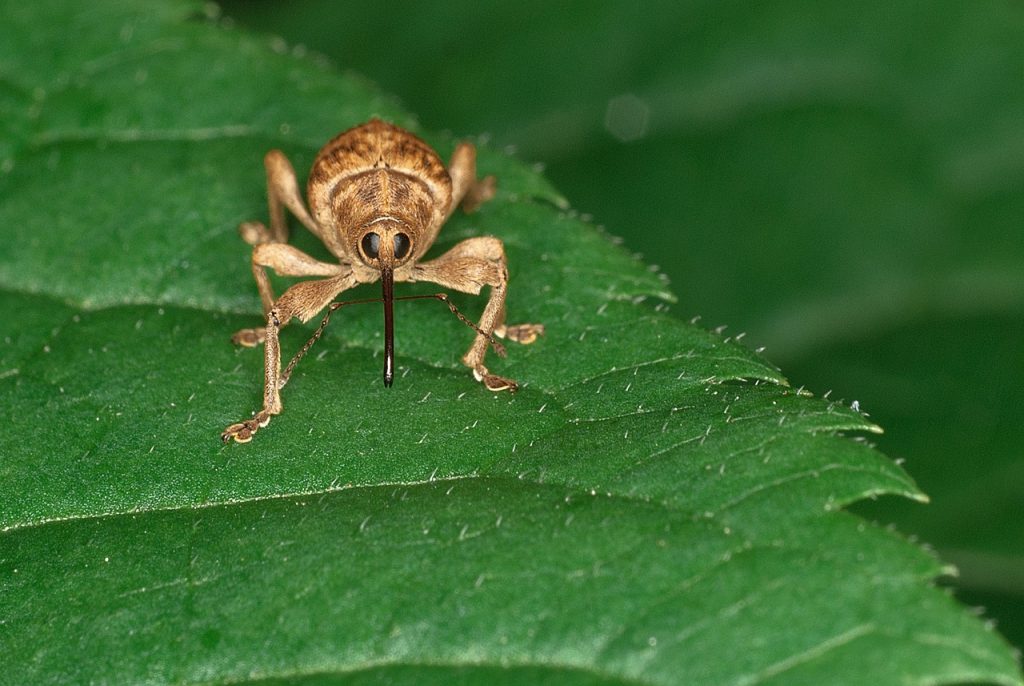Weevils are a common garden pest that can damage and destroy plants by feeding on roots, leaves, buds, and stems. With their long snouts and hard shells, these beetles are difficult to control. However, with persistent monitoring and a multi-pronged approach you can get rid of garden weevils organically and prevent further infestations.
What are Weevils?
Weevils are a type of beetle measuring about 1/4 inch long with signature elongated snouts. While there are many varieties, some common garden weevils include
-
Black vine weevil: larvae feed on roots, adults on leaves
-
Strawberry root weevil: larvae and adults feed on roots
-
Rice weevil: feeds on stored grains and seeds
-
Alfalfa weevil: feeds on alfalfa and other legumes
Weevil larvae are grub-like, legless, and feed below ground. Adults emerge in spring to feed above ground before laying eggs in soil or plant debris. Weevils can completely defoliate plants and stunt or kill them by destroying the root system.
Signs of Weevil Damage
Watch for these signs to detect weevils early:
-
Notched, ragged leaf edges
-
Wilting, dying plants
-
Presence of grubs around roots
-
Holes in buds, flowers, leaves
-
Sawdust-like frass near plants
Thoroughly inspect the base of plants for larval damage and check under leaves for adults. Act quickly once detected to get rid of weevils and prevent reproduction.
Organic Weevil Control Methods
Control weevils with these organic methods:
Remove Infested Plants
Pull up and discard badly damaged plants to eliminate weevil breeding sites.
Apply Beneficial Nematodes
Apply nematodes to soil to kill larvae. They are harmless to plants and people.
Use Diatomaceous Earth
Sprinkle diatomaceous earth on soil to desiccate and kill larvae and adults. Reapply after rain.
Employ Physical Barriers
Cover plants with fabric row covers to exclude adult weevils.
Practice Crop Rotation
Rotate plant families in different beds each year to disrupt weevil life cycles.
Clean up Debris
Remove plant litter, boards, and other hiding spots to eliminate habitats.
Attract Natural Predators
Welcome birds, beneficial insects, frogs, and nematodes to feed on weevils.
Handpick Adults
Inspect plants at night and handpick adult weevils found feeding. Drop in soapy water.
Use Insecticidal Soap
Spray plants with insecticidal soap to kill adults on contact. Target undersides of leaves.
Preventing Future Weevil Infestations
Stop weevils before they start with these proactive measures:
-
Maintain healthy soil with compost and mulch to grow strong plants
-
Control weeds that can act as alternate hosts
-
Clean up fallen fruits/vegetables that can host larvae
-
Use floating row covers to keep adult weevils off plants
-
Rotate plant families to different beds each year
-
Check new plants thoroughly for signs of weevils before planting
-
Avoid planting root crops late in season when larvae are active
With persistence and an integrated pest management plan, you can get rid of existing weevil infestations and prevent future ones. Combining multiple organic control methods is key to successful, eco-friendly weevil control in the garden.
Dealing with a Weevil Problem
These bugs are about a third of an inch long, light gray, and have a “V” shape on their wings. Although they have wings, weevils do not fly. Weevils are also capable of living for up to two years.
Weevil larvae are roughly the same length as adult weevils, have no legs, and are green in color. Eggs are white when they are laid, and turn black before hatching.
Weevils feed on the foliage and roots of many garden plants, especially vegetables. If they have a way to enter, they can become a problem for indoor growers, as well. Larvae as well as adults both feed on many types of vegetable and ornamental crops. The “vine weevil” is a type of weevil that is especially a problem for plants grown in containers.
Weevils are most active in the evening hours. If you want to see them, you should go into your garden at night with a flashlight because it will be hard to see them during the day.
How To Get Rid Of Vine Weevils Without Pesticides – Both Adults and Grubs
FAQ
What kills weevils in the garden?
How do I permanently get rid of weevils?
Are weevils bad for the garden?
Will vinegar kill vine weevil?
How do I get rid of weevils in my garden?
Encouraging these types of enemies is a natural and safe way to get rid of weevils inhabiting your garden. Attract birds by setting up bird feeders or birdbaths like the Alpine Corporation 3-Tiered Pedestal Water Fountain and Bird Bath can help keep weevils under control if set up close to your garden.
Do pesticides kill weevils?
Insecticides are a great way to prevent and treat infestations of weevils. When picking a pesticide, you can use either natural or chemical products When applying pesticides to your plants, wait until nighttime, as this is when weevils will be most active.
How do you keep weevils from moving between plants?
You can also use protectants such as Tanglefoot Tangle-Trap Sticky Coating to secure your plants. These traps keep weevils from moving between plants, but they don’t prevent the pests from inhabiting your garden unfortunately. You can also wrap your plant stems with sticky tape. Clear Scotch tape is one option.
How can I prevent weevils from becoming a problem?
One way to prevent weevils from becoming a problem is by encouraging their natural predators to keep them at bay. Weevils fall victim to many different kinds of predators but you want to encourage the ones that are safe for your garden and overall environment.
- A Complete Guide to Caring for Yuki Cherry Blossom Shrub - January 23, 2025
- Identifying Red Hot Poker Seeds: What to Look For When Harvesting Torch Lily Pods - January 23, 2025
- A Complete Guide to Harvesting Evening Primrose Seeds - January 23, 2025

